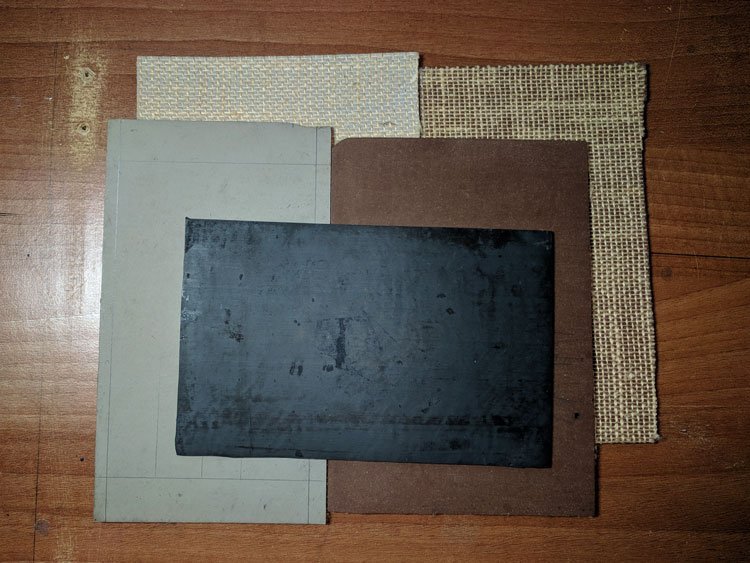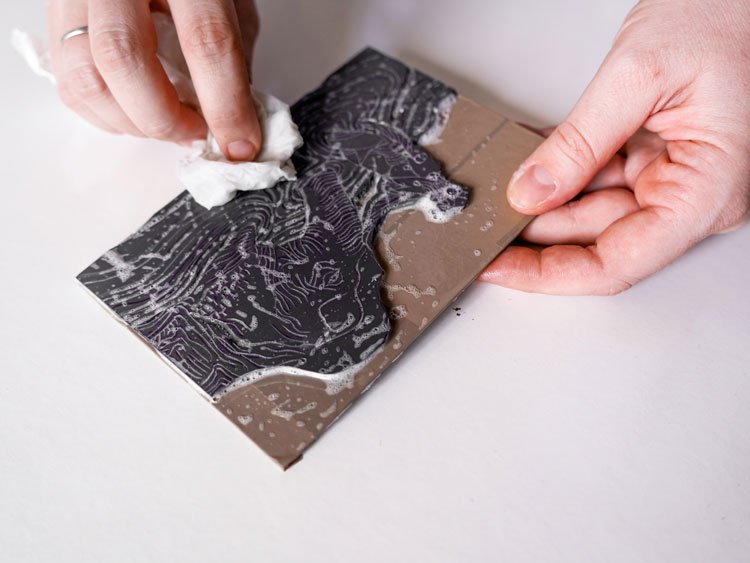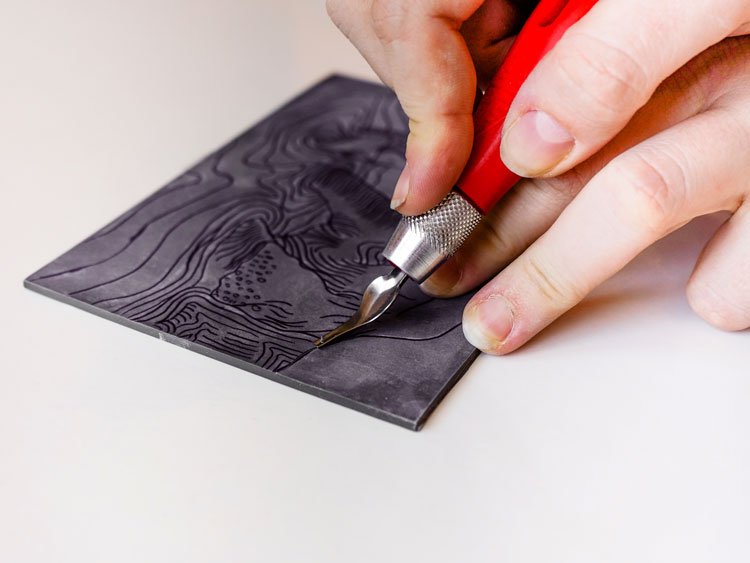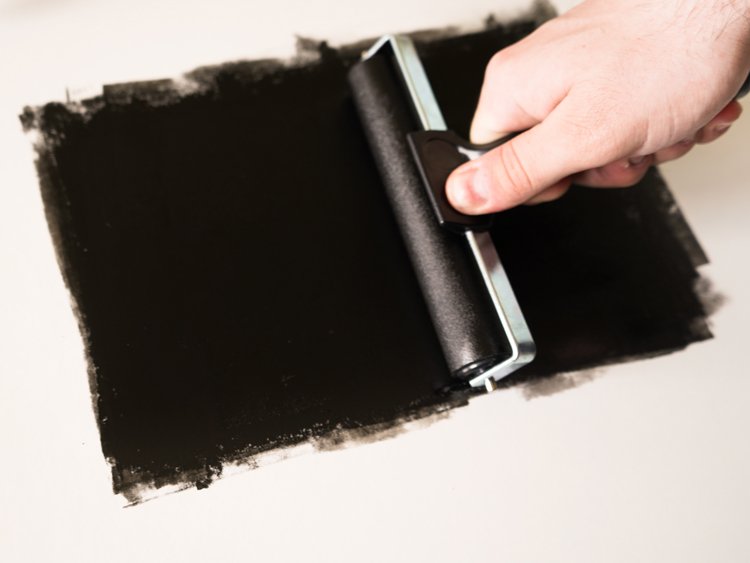Printmaking, an art form that allows artists to transfer their creative ideas onto paper using various techniques, heavily relies on the use of lino for producing high-quality, textured prints. Over time, these lino sheets can degrade, become brittle or simply fall out of use, leading to the necessity of disposal. However, given the environmental challenges our world is facing, it is vital to discard these materials responsibly, ideally, through recycling or reusing.
Table of Contents
Disclaimer
The information in this article is intended for general informational purposes and is based on sources believed to be reliable. However, the accuracy, completeness, or applicability of the information is not guaranteed. Practices regarding recycling and waste disposal can vary by location and change over time. Always consult local regulations and product instructions for accurate information. The author and publisher disclaim responsibility for any adverse effects resulting from the use of the information herein.
The Natural vs. Synthetic Linos
Before delving into the methods of disposal, let’s first familiarise ourselves with the types of linos used in printmaking – Natural Lino and Synthetic Lino.
Natural Lino
Natural lino, also known as linoleum, is an eco-friendly material manufactured from renewable resources. Its composition includes linseed oil, pine rosin, cork dust, wood flour, and a jute backing, all elements that stem from nature. Linseed oil is the key ingredient, which is obtained from the dried ripe seeds of the flax plant.
Benefits of using natural lino include:
- It’s a durable material that doesn’t wear out quickly.
- Natural lino provides a firm surface for detailed carving.
- It’s biodegradable and doesn’t release harmful chemicals when decomposed.
Synthetic Lino
Synthetic lino is a petroleum-based product made from non-renewable resources. It includes materials like PVC (polyvinyl chloride), fillers, plasticisers, and other synthetic components.
If you have purchased a linocut kit, it is more than likely that it comes with a synthetic lino block, as these are commonly included due to their ease of use and affordability, making them a great choice for beginners.
Advantages of synthetic lino:
- It’s typically softer and easier to carve than natural lino.
- It can be found in various colours which can be beneficial for different design aesthetics.
- It’s less prone to crumbling or chipping.
Comparison of Different Styles of Printmaking Lino
Printmaking lino’s come in a variety of styles, each offering its unique advantages and potential challenges. Below is a table comparing the main features of several popular styles:
| Natural Lino | SoftCut Lino | Easy-Cut Lino | Clear-Cut Lino | |
|---|---|---|---|---|
| Material | Linseed oil, pine rosin, cork dust, wood flour, jute | Synthetic rubber compound | Synthetic rubber compound | Transparent synthetic material |
| Ease of Carving | High level of firmness, requires more strength and skill to carve | Very easy to carve, ideal for beginners | Extremely easy to carve, best for children and beginners | Easy to carve, clear material allows for precision |
| Detail Level | High detail level, excellent for intricate designs | Medium detail level, better for simpler designs | Low detail level, may not hold fine lines well | High detail level, transparency allows for accurate carving |
| Durability | Highly durable, does not crumble or break easily | Less durable, can crumble with rough handling | Less durable, tends to crumble or break with rough handling | Highly durable, resistant to crumbling |
| Eco-friendliness | Biodegradable but not recyclable | Non-biodegradable and usually non-recyclable | Non-biodegradable and usually non-recyclable | Non-biodegradable and usually non-recyclable |
| Best Used For | Professional printmaking, detailed and intricate designs | School projects, beginners learning basic carving techniques | Children’s projects, beginners learning basic carving techniques | Detailed designs, projects requiring precise alignment |
| Physical Traits | Rough, firm texture, natural earthy or brownish colour | Soft, flexible, typically grey or white | Extremely soft, pliable, typically blue or bright colours | Rigid yet flexible, transparent or semi-transparent |
It’s essential to choose the right type of lino based on the intricacy of your design, your skill level, and your personal preferences. Regardless of the lino you choose, remember to follow the appropriate disposal methods to minimise environmental impact.
Disposing of Lino: The Environmental Considerations
When it comes to disposing of old lino, it’s crucial to be mindful of the environmental impact. Not all lino types are made equal, especially regarding their recyclability and biodegradability. Below is a simple comparison table to help visualise the traits of each material:
| Natural Lino | Synthetic Lino | |
|---|---|---|
| Recyclable | No | Yes* |
| Biodegradable | Yes | No |
| Compostable | No | No |
| Incinerable | Yes | No |
*Note: Although synthetic lino is technically recyclable, not all recycling facilities accept it due to its complex composition. It’s recommended to check with local services before attempting to recycle synthetic lino.
Disposing of Natural Lino
Natural lino, as a biodegradable material, will eventually break down over time in a landfill. However, due to the lack of oxygen in landfill conditions, this process can take many years and might produce methane, a potent greenhouse gas.
Despite the fact that natural lino can’t be conventionally recycled, it can be repurposed or reused in a variety of ways:
- Craft Projects: Old lino can be used for a variety of crafts and DIY projects around the home. It can also be donated to schools or art programs for use in their own projects.
- Alternative Uses: Pieces of old lino can be useful in the garden as plant markers or for scraping soil off gardening tools.
- Incineration: Since natural lino is composed of organic materials, it can be safely incinerated. The linseed oil content provides high-energy value, which can be harnessed as a heat source in industrial applications.
Disposing of Synthetic Lino
Disposing of synthetic lino is more challenging due to its non-biodegradable nature. Here’s how you can handle synthetic lino disposal:
- Recycling: Some recycling facilities accept synthetic lino. It’s crucial to check the guidelines provided by your local recycling service before placing your synthetic lino in the recycle bin.
- Landfill: If recycling is not an option, synthetic lino will have to be disposed of in a landfill. However, remember that synthetic lino does not decompose, contributing to the persistent problem of plastic waste.
- Reuse: Like natural lino, synthetic lino can also be reused or repurposed for various uses, particularly due to its durability and versatility.
Biodegradable vs. Compostable: Understanding the Difference
When discussing eco-friendly materials and responsible waste disposal, the terms ‘biodegradable‘ and ‘compostable‘ often come into play. While they may seem interchangeable at a glance, they actually signify different processes and outcomes, and understanding this distinction is key to disposing of materials responsibly.
Biodegradable
A material is classified as biodegradable if it can be broken down naturally by microorganisms such as bacteria and fungi, eventually returning to nature. This process does not have a specific time frame and can vary greatly depending on the type of material and environmental conditions.
Biodegradation can occur in various environments, including water, soil, and even landfill conditions. However, in an oxygen-deprived landfill, biodegradation can generate methane, a potent greenhouse gas.
One critical aspect to note is that ‘biodegradable’ doesn’t necessarily mean ‘eco-friendly’. Some biodegradable products can break down into smaller pieces, but leave behind harmful residues.
Compostable
Compostable materials not only break down but also disintegrate entirely and quickly under specific conditions, typically in a composting environment. Importantly, they degrade into nutrient-rich compost, adding beneficial material back into the environment.
Composting requires certain conditions, including the presence of heat, moisture, and air. These conditions, combined with the work of microorganisms, enable the material to break down within a few weeks to several months.
Unlike biodegradable items, compostable materials leave no toxic residue behind. They break down to form a substance called humus, which enriches soil and contributes to improved plant growth.
To sum it up, while both biodegradable and compostable materials can break down and return to the environment, compostable materials do so in a more eco-friendly and beneficial manner, providing valuable nutrients back to the earth. Understanding these differences can help guide responsible disposal practices and promote more sustainable choices.
To conclude, thoughtful disposal of lino not only prevents unnecessary waste but also helps to create a sustainable environment for future generations. Whether it’s natural or synthetic, there are ways to discard your old lino responsibly. And remember, when in doubt, opt for reuse or repurposing before consigning your lino to the waste bin.
Disposing of your printmaking lino properly is an important final step. To learn more about the entire process, discover more about the lino printing process in our comprehensive guide.
Featured Linocut Guides
Check Out Our In Depth Lino Printing Guides















